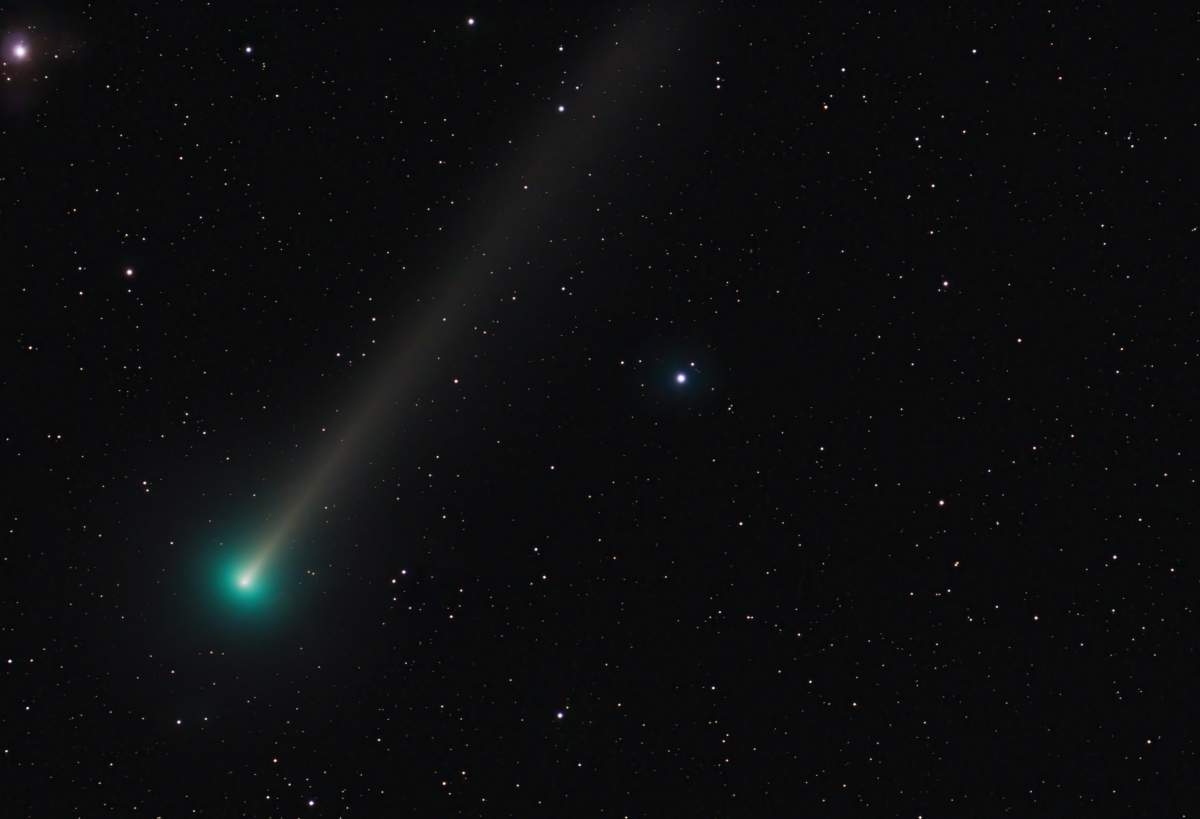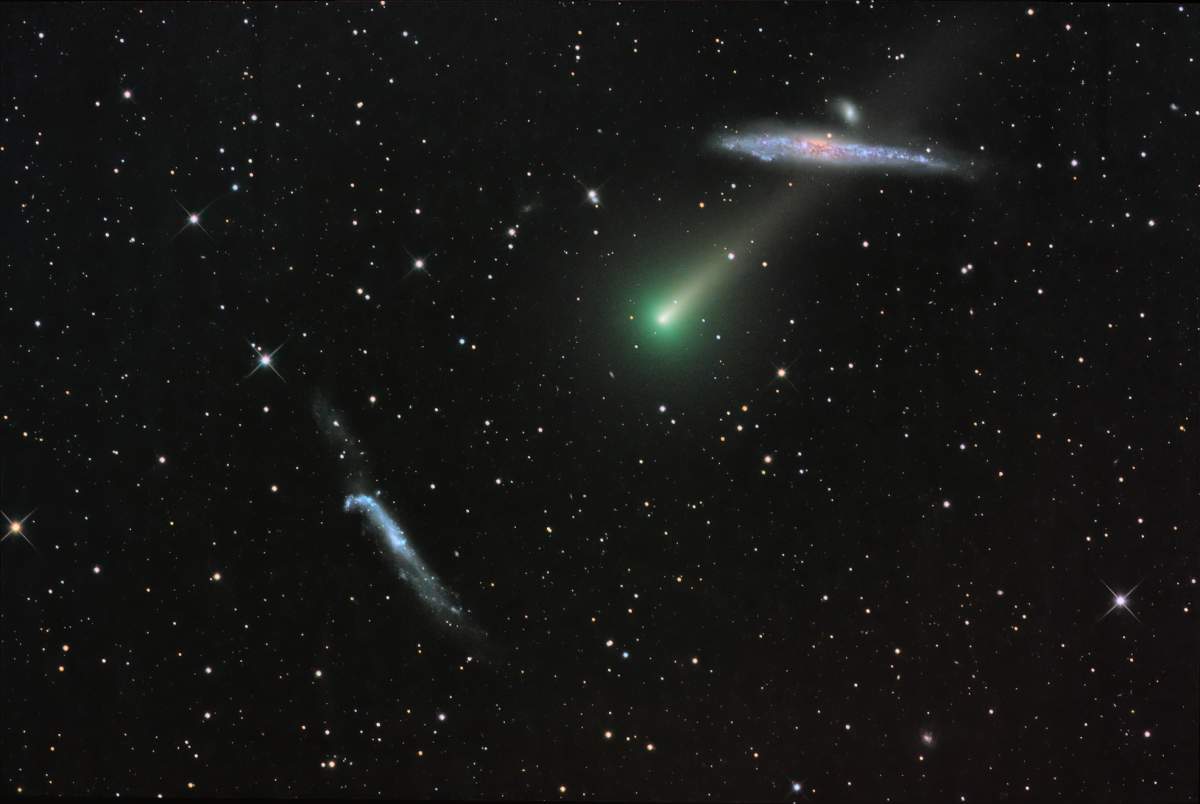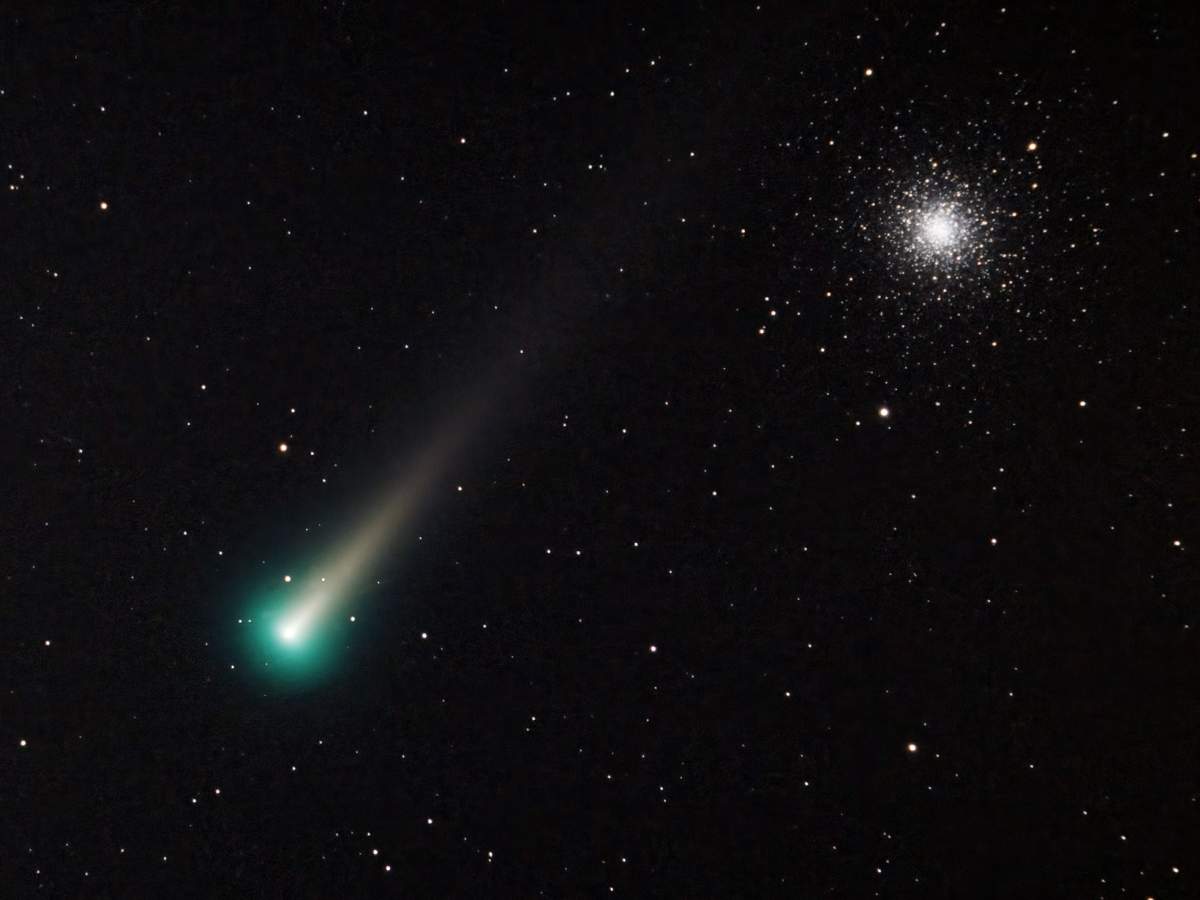A comet that was discovered earlier this year will be making its closest pass to Earth this weekend.

Comet Leonard should be a spectacle B.C. residents could view in the skies. But Mother Nature could spoil that.
Environment Canada is forecasting clouds and periods of rain for the Lower Mainland and Vancouver Island through to Wednesday, while clouds and snow are expected for the Okanagan during the same timeframe.
However, should the clouds somehow part, British Columbians are urged to take in this rare experience.
Earlier this month, two amateur astrophotographers captured wonderful images of Comet Leonard.
Gregg Ruppel in Arizona photographed the comet on Nov. 24 and Dec. 8. For more on his work, visit his website.
And Patrick Prokop in Georgia photographed the comet on Dec. 3. For more on his work, visit his website or YouTube channel.
One website report says, via orbital calculations, Comet Leonard spent the last 35,000 years travelling towards the sun.

Get breaking National news
Wesley Fraser, a senior research officer with the National Research Council of Canada at the Herzberg Astronomy and Astrophysics Research Centre in Victoria, says Leonard is a long-period comet.
Comets like Leonard are called long-period comets because, Fraser explains, their orbital periods go around the sun once every tens to hundreds of thousands of years.
“In that sense, Comet Leonard is kind of a standard comet, in that it’s another long-period comet,” Fraser told Global News. “But it happens to be that it gets relatively close to the Earth for good viewing by us, and gets extremely close to Venus not too long thereafter.
“And so it’s drawn a bit of excitement from the astronomy community because it’s an opportunity to observe a newly falling-in body that is going to get pretty close and pretty bright.”

“Most comets we see are actually falling in towards us, from some other distant location,” Fraser said.
“Some fall from the Kuiper Belt inwards, but most of them fall from the Oort Cloud. We know the presence of the Oort Cloud because of these comets, and we see a bunch of them fall in from basically all different directions at a range of distances.”
Comet Leonard was discovered in January 2021 by Greg Leonard, a senior research specialist at the University of Arizona.
It’s thought the comet’s nearest approach to Earth will be 34 million kilometres away, which will likely require binoculars if skies are clear enough.
But when it passes by Venus, reports have it passing at a distance of 4.2 million km.

“It’s not going to be like Comet Hale-Bopp (in 1997), which was a spectacular, once-in-a-lifetime experience,” said Fraser. “And Comet Neowise (in 2020), when those of us on the West Coast, even with the clouds in summer, could see it.”
“(Leonard) is going to be closer to that, though not quite as spectacular. It is getting pretty bright.”
Fraser said, in fact, if you have clear skies and look towards the southwest just after sunset, you should be able to see it.
However, he noted it won’t be big, and that it will look like a tiny star.
“So it’ll be very hard to identify unless you know exactly what you’re looking for,” said Fraser. “But if you have binoculars, you should be able to see a little bit of a tail sticking off it.”

Fraser noted that if you choose to visually hunt the comet, a dark spot is best.
“It is a comet that is bright enough that I do think it’s worth getting out the binoculars and trying to find,” said Fraser.
To spot it, Fraser said look directly south of Venus, just after sunset. He also said the comet will be near a bright star named Arcturus.
Locate those two spots, said Fraser, look down, then scan the horizon to spot the comet.
“Unfortunately, it’s here only for another couple of nights, before it moves to the southern hemisphere, where we’ll no longer be able to see it,” said Fraser.
“But it’s still a rare thing and they’re really spectacular to see. If you’ve never seen a comet before, go find a pair of binoculars and get out and look at the skies this weekend, because another one of these might not come around for another 15 years, which is pretty typical.”
“And they’re amazing to see. The first time you see one, it blows your mind. So I really recommend that people go take advantage of one of these natural phenomenons.”







Comments